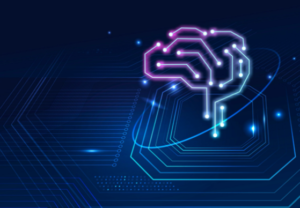Intelligent automation, artificial intelligence and natural language processing can optimize the shopping experience of the future.
change is coming
The COVID-19 pandemic has changed retail forever. Consumer behavior and preferences have changed dramatically, with far-reaching and lasting effects. The next three to five years will be key to the evolution of the retail industry, with technology and intelligent automation playing a major role in this transition. But how can intelligent automation (IA), en kunsmatige intelligensie, and additional capabilities such as natural language processing (NLP) be applied to optimize the shopping experience of the future?
How to ensure timely replacement of running shoes
Take long-term running trainers: Professional runners know they should change their shoes every 500 miles to avoid injury. But how many people can actually do it?
Today’s fitness apps can track runners’ accumulated distance and remind them to order new shoes in time. Even in the process, provide them with quick links to online retailers. Isn’t this great?
The basic driving force that empowers the above application functions is intelligent automation, or IA for short. IA uses system preset rules to automate the entire process of ordering new running shoes through timely data uploads and automatic statistics, as well as authorization from the retailer’s website. Thereby completely out of the manual participation.

Intelligent Automation
Perfect customer service
Imagine this scenario: when a guest spends twenty minutes deliberating, he finally chooses a fitness watch that he is satisfied with. But when she was finally excited to add the product to the shopping cart and was about to buy it, she suddenly found that the product was out of stock. One can imagine how disappointed she must be at this time.
What is different from traditional retail methods is that this store uses an intelligent and automated customer service system. While noting that the item was out of stock, the human customer service immediately offered another watch of a similar style, more expensive, but still in stock. Wat meer is, the seller will immediately issue a 15% off gift certificate and apologize to the customer for not restocking the store in time. Op hierdie manier, guests only need to spend about the original budget to buy a more high-end fitness watch. Just imagine, what would you do if you were the guest? Will you go to the bum and happily pay the bill?
For sellers, empowering the customer service system through intelligent automation has created a business opportunity that would otherwise be lost. Not to mention, a high-quality buying experience may lead to secondary purchases by guests. One can imagine how much benefit this will bring to the company!
The above example is achieved through intelligent automation.
principle
Dus, how is such a magical operation achieved?
Eerstens, chatbots and virtual agents prompt the bots to obtain order status and consult various IT systems to confirm out-of-stock status. Daarna, NLP detected her dissatisfaction through sentiment analysis of customer messages and automatically decided to transfer her to a human customer service. Volgende, a digital expert with access to the retailer’s finances and inventory recommends another product and a 15% discount. Uiteindelik, sellers satisfy customers and brand loyalty increases. Op dieselfde tyd, the number of negative reviews has been reduced on major review sites.
This is how IA customizes the retail experience, reaps benefits and brand loyalty. And all these IA steps happen behind the scenes. Customers will never know, in the first place, that they are dealing with machines. Simple and general problems that are easily solved by computer algorithms. And higher-level functions – which require human intervention – go directly to experts.
Isn’t intelligent automation amazing?

Intelligent Automation
this is just the beginning
Do you think this is over? This is just the beginning. All behaviors of customers on the website will generate data through IA interactors. And when enough data is collected, we can do more customer analysis and AB testing. Op hierdie manier, a more comprehensive set of automatic response techniques is optimized. Through big data analysis, all conversations and customer service processes are automatically optimized to improve the success rate of artificial intelligence customer service. The more optimized the language and process, the higher the order rate; and the more orders, the more opportunities for artificial intelligence to analyze data. This kind of update iteration can form a virtuous circle of more data, more transactions; more transactions, more data acquisition.
real beneficiaries
Brinks Home is a beneficiary of this technology. Using data collected since 1994, the company dedicated to home security products has tested thousands of different rhetoric and offer strategies through IA and artificial intelligence, constantly improving rhetoric, channels, and delivery times. Through the empowerment of IA and artificial intelligence technology, the company’s overall revenue in the first half of 2021 increased by 9.5% compared with the same period in 2020.
Are you ready?
Can IA and related technologies completely disrupt the retail industry? The answer to this question is not yes or no, but how long it will take to completely disrupt. The winners of this competition will be those companies that are fully prepared for this revolution and have a large amount of raw data deposited.
The mountains and the rain are about to come and the wind is full of buildings, are you ready?





